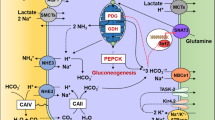Abstract
In enamel fluorosis model rats treated with sodium fluoride, secretory ameloblasts of incisor tooth germs exhibited disruption of intracellular trafficking. We examined whether heterotrimeric G proteins participated in the disruption of vesicular trafficking of the secretory ameloblast exposed to fluoride, using immunoblotting and pertussis toxin (IAP)-induced adenosyl diphosphate (ADP)-ribosylation for membrane fractions of the cell. Immunoblotting of crude membranes, post supernatants of the ameloblast, with anti-Gi3/o and anti-Gs antibodies showed that Gi3 or Go proteins existed in the secretory ameloblast, but Gs protein did not. Immunoblotting of the subcellular membrane fractions indicated that the Gi3 or Go proteins were located in the Golgi membrane, but were not in the rough endoplasmic reticulum (rER) membrane. Autoradiograph of IAP-induced ADP-ribosylation, however, showed the existence of IAP-sensitive G proteins both in rER and Golgi membranes. Fluoride treatment decreased the G proteins bound to both membranes. These findings indicate that different G proteins, both of which are IAP-sensitive, are present in the rER and Golgi apparatus, and suggest that these G proteins participate in the disturbance of intracellular transport of the secretory ameloblast exposed to fluoride.
Similar content being viewed by others
Author information
Authors and Affiliations
Additional information
Received: 24 June 1998 / Accepted: 8 September 1998
Rights and permissions
About this article
Cite this article
Matsuo, S., Kiyomiya, Ki. & Kurebe, M. Mechanism of toxic action of fluoride in dental fluorosis: whether trimeric G proteins participate in the disturbance of intracellular transport of secretory ameloblast exposed to fluoride. Arch Toxicol 72, 798–806 (1998). https://doi.org/10.1007/s002040050576
Issue Date:
DOI: https://doi.org/10.1007/s002040050576




